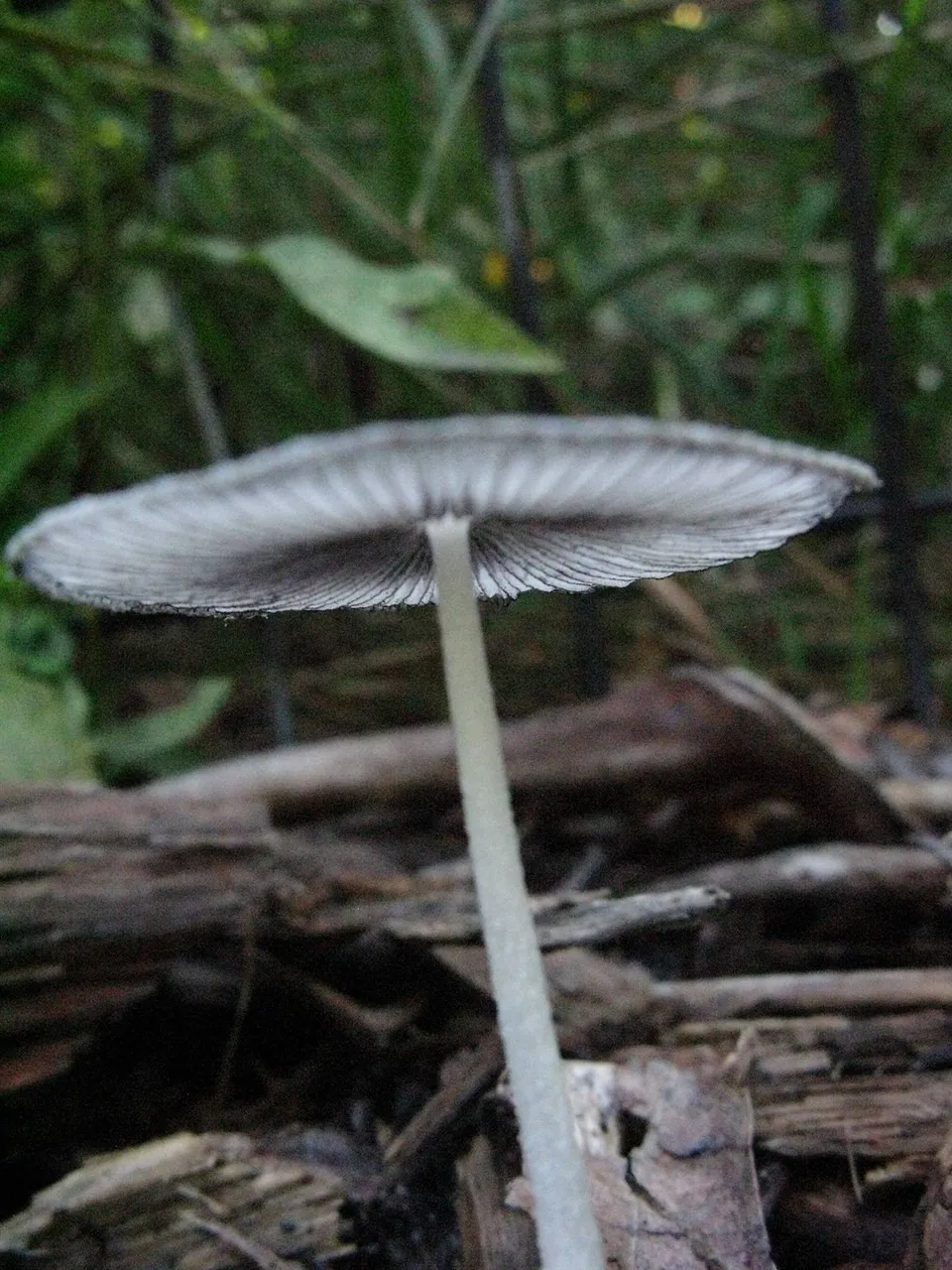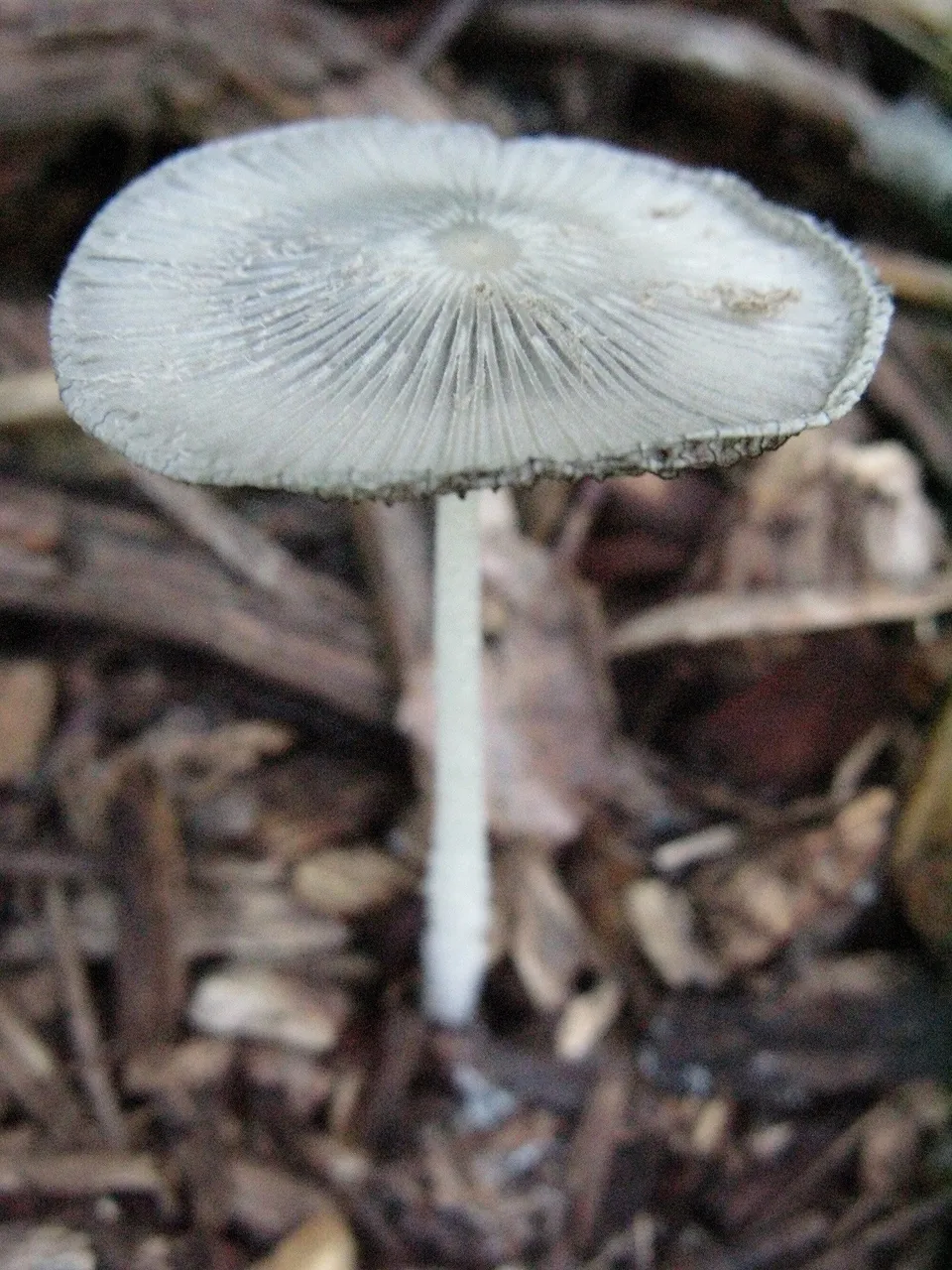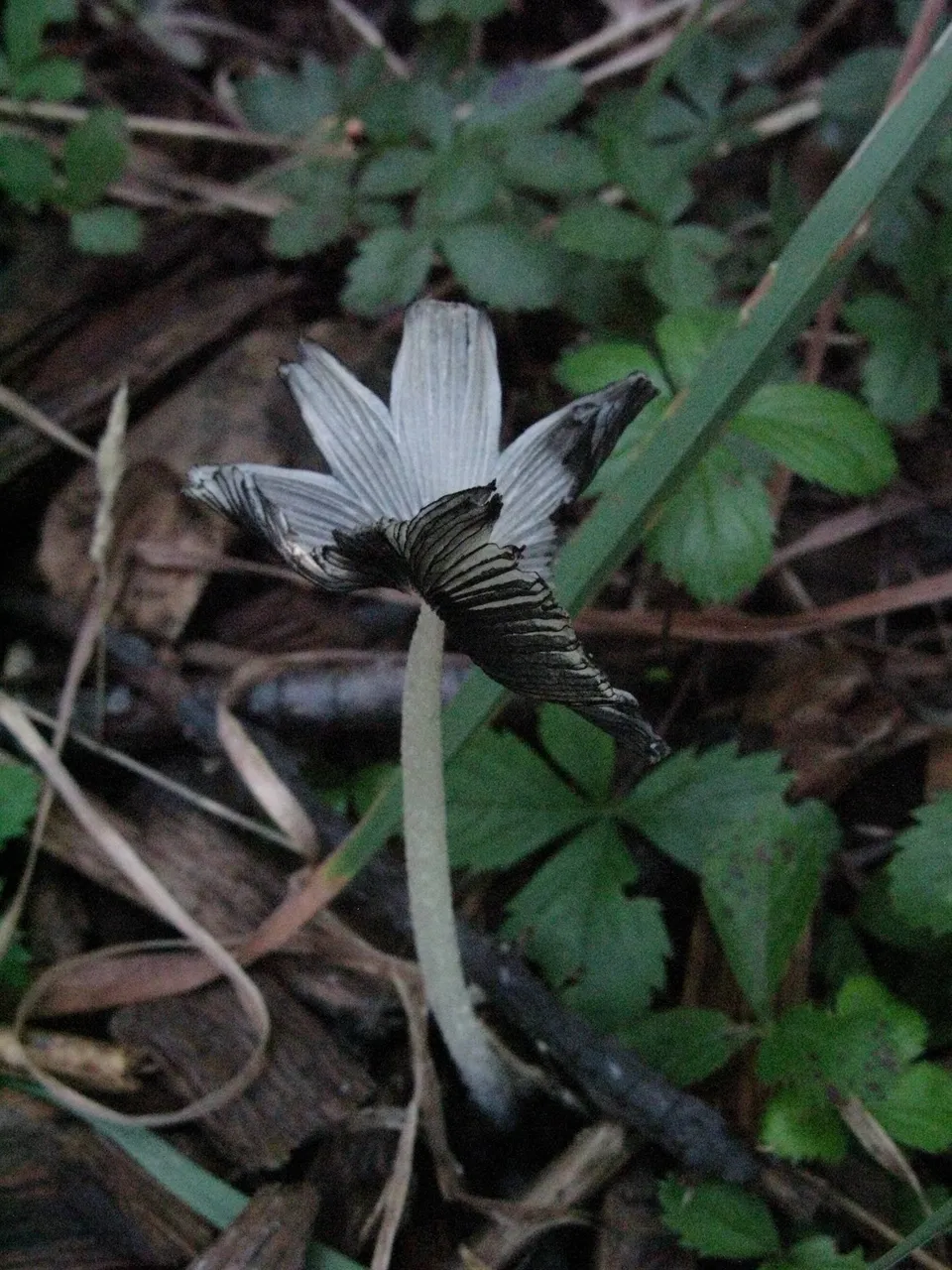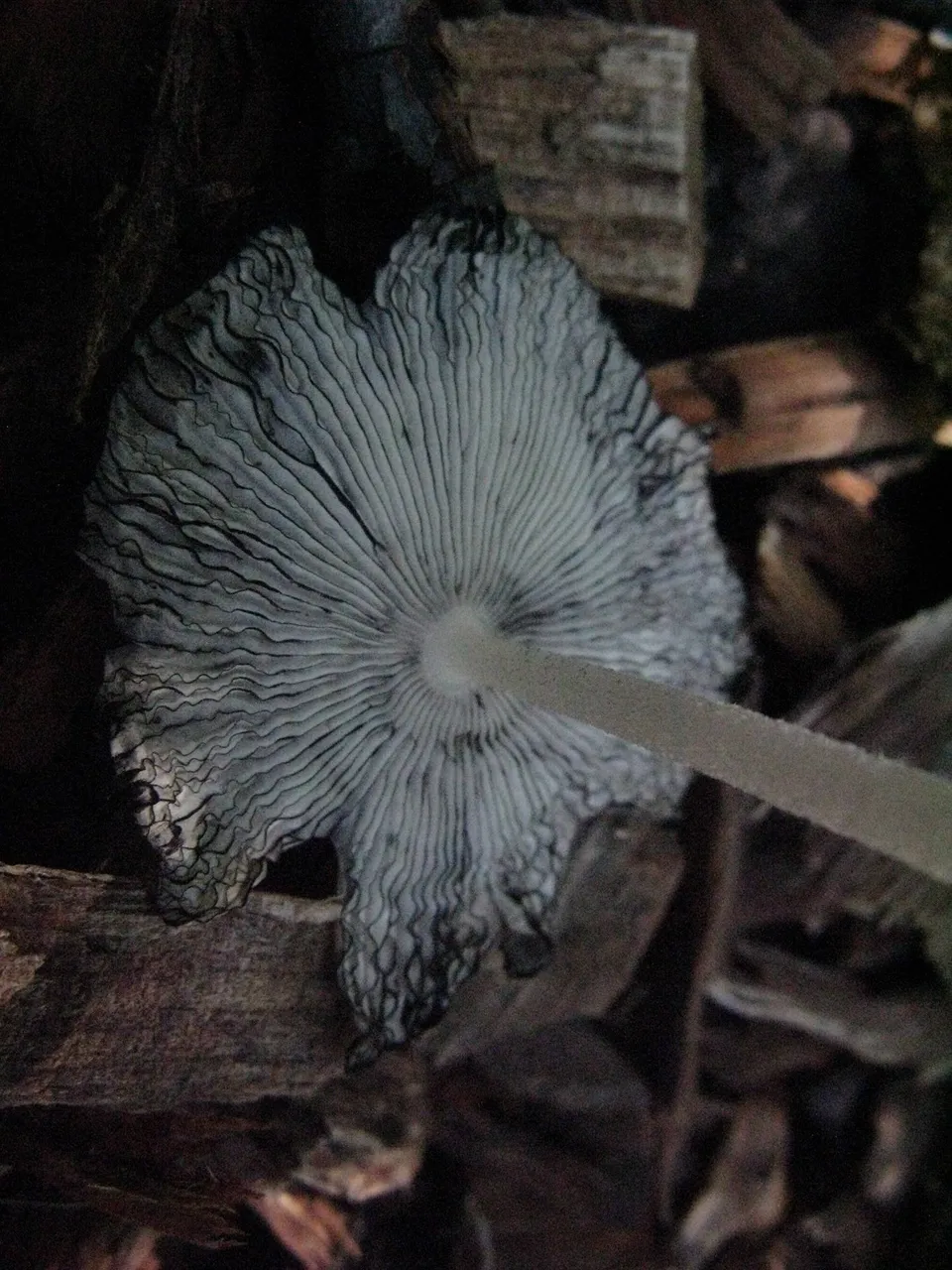
Take a look at this delicate beauty
Edit: @fabulousfungi commented and suggested that Coprinopsis cinerea - and for the most part it fits the bill even closer to what I found. Only the width of the stem might be slightly different. I also found a young specimen as well i think, but didn't know it was the same mushroom. I will update the post with that photo and more changes when i get home.
What you have before you there is almost certainly something in the Coprinus genus, but beyond that, I truly don’t know. And that isn’t for a lack of trying. My best guess is Coprinus plicatilus. I say this based on a review of the pictures which follow; the fact that this species has been found in central park before; and a review of several other sources cataloguing this species.
However, I am not entirely convinced – and Michael Kuo indicates that there are a number of Coprinus species that look very similar to each other macroscopically which require microscopic work to distinguish fully. Unfortunately they are very fine and I had no way to transport them home.

This mushroom was quite beautiful – very small and very delicate.
The Cap was maybe 2.5cm in diameter and the stem about 3-4 centimeters tall. It was growing along a wood chip lined path in Central park, near the west edge of the large reservoir.
The younger specimen above was growing by itself without any other mushrooms immediately nearby. Having said that, it’s fair to guess that the mushroom pictured above may be fairly far along in its maturation, and that it may also have started life conically and then expanded to flat. I say this because there is already a black outline along the cap edge, which might be the beginning of deliquescence. Plus, some of the research about what species it might be supports the notion that it probably started out conical in shape.
Particularly beautiful, take a look at the stem

All of these shots are extreme close ups of the same mushroom.
Here you can see the delightfully furry stem, covered in a down similar to the hair of a white Shih Tzu puppy. The portion of the stem pictured is about 2 cm in length. What I really like about this photo is the ability to see the connected mycelium itself peaking out from under the medium of the woodchips It is that spider-web material stretched between the wood.
As I’ve said before, it is a good idea to try to find different specimens of the same mushroom in different states of maturity. A few yards away I was lucky enough to find just that.

Here is an older specimen.
This mushroom has the tell-tale signs of deliquescence, and has gone from the mature flat state into a wild convex shape. I decided to halve this specimen and see what the state of the super fine stem was.

Totally hollow as expected. Right beside this more broken down mushroom was a third, growing “gregariously” or in a small group. This mushroom was somewhere between the young and old one. Take a look, from the bottom up.

Important things to take note of:
Deliquescence appears to be occurring here as well.
The stem has lost a lot of its fuzziness
The gills do not connect to the stem.
I did not get a spore print of these mushrooms – but I don’t think one would have been helpful. The Coprinus genus turns the entire cap into the spore holding black substance – so in essence, we see the spore print results looking at the cap – black ink colored.
So, what mushroom is this again?
Excellent question. Since I found the mushroom in Central Park I first checked out Gary Lincoff’s list of Central Park mushrooms. That was not precisely forthcoming. After cross referencing resources covering Coprinus plicatilus or the Japanes Umbrella Inky Cap, I think there is a good chance that this is the mushroom in question here.
I have some doubts – specifically some pictures of C.plicatilus show it with somewhat darker gills pre-autodigestion – and the stem is referred to as “faintly fibrillose” in some sources, but appears quite firbrillose in the middle photo.
But, without doing an analysis of the spores, I’m afraid I cannot be as certain as I’d like. (SPOILER: We may actually get to the first microscopy work soon enough, as I did manage to take home a heartier mushroom for a print.)
But for now, we have to be satisfied with the beautiful photos of these ethereal, ghostly mushrooms, which, for lack of a better guess, I will call C.plicatilus.
Support SteemSTEM – curating and supporting STEM related content on Steemit.
Information Sources:
http://www.mushroomexpert.com/parasola_plicatilis.html
http://www.grzyby.pl/coprinus-site-Kees-Uljee/species/callinus.htm
http://www.grzyby.pl/coprinus-site-Kees-Uljee/species/amphitha.htm
http://www.grzyby.pl/coprinus-site-Kees-Uljee/species/subimpat.htm
http://www.first-nature.com/fungi/parasola-plicatilis.php
https://en.wikipedia.org/wiki/Parasola_auricoma
All Photos Are My Own